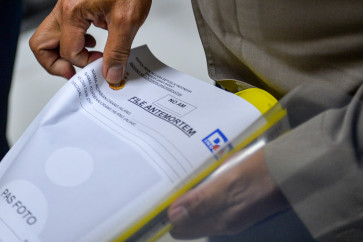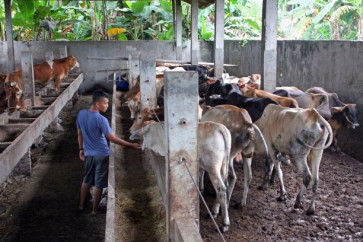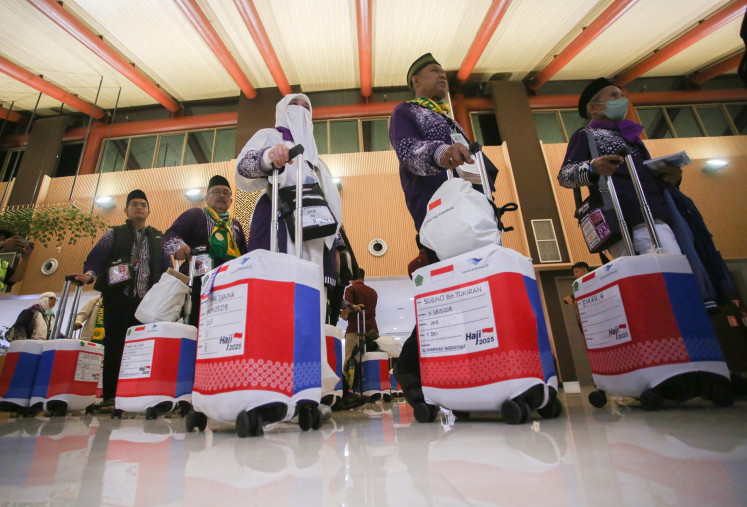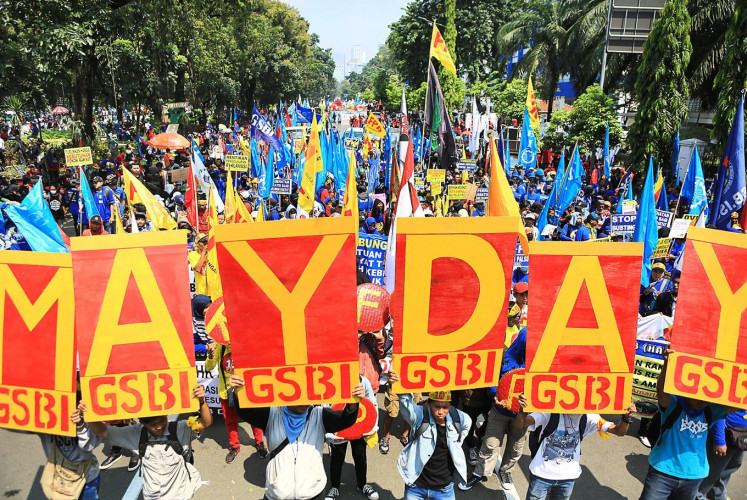ASEAN: The next 50 years
ASEAN states learned to adapt, and eventually benefited from waves of globalization in the form of open trade, free flow of investment, relocation of manufacturing, effective transfer of technology and development of human resources
Change text size
Gift Premium Articles
to Anyone

A
SEAN states learned to adapt, and eventually benefited from waves of globalization in the form of open trade, free flow of investment, relocation of manufacturing, effective transfer of technology and development of human resources.
In short, ASEAN member states tailored the force of globalization to their advantage. Over half of ASEAN’s population is now in the middle-income category, with a higher quality of life and the ability to consume goods and services from abroad. ASEAN member states have become export-oriented economies and some of the “core countries” have found themselves on the losing end of globalization.
Now they want to rewrite the rules of the game. This is evidenced in the withdrawal of commitment to global trade deals, the redirection of investment to domestic Western economies, a rise in protectionist policies and an emphasis on a “my country first” philosophy.
All these developments are potentially damaging to the ASEAN approach of welcoming and accommodating trade and foreign investment.
There are now unmistakable signs from the United States, a major dialogue partner, that the rules of the game will be changed. Preference will be given to one-on-one bilateral negotiations, rather than the “ASEAN Way” of collective bargaining.
In recent years, prior to the recent US shift, a more assertive China has also undermined the basic assumption that ASEAN has always been solid when it comes to external relations.
China has become the second largest economy in the world and all ASEAN countries have become dependent on the Chinese market. Having replaced the EU, Japan and the US as ASEAN’s largest trading partner, China has now chosen to reconfigure its relations with its southern neighbors. In doing so, ASEAN’s agenda has been frustrated, its normal practices altered, and, its traditional solidarity undermined.
For the ASEAN Community to face the global challenges and survive increased competition, member states need to tackle a number of key issues.
First, deliver on the agreed commitments. ASEAN has prided itself on achieving most of the legal instruments it set out to establish the 2007 ASEAN Charter, and the blueprints to make the ASEAN Community a reality. But what is lacking is the will to implement those instruments at the national level of each member state.
In the past, we made do with accommodation and collegial compromises. This “ASEAN Way” of procrastination and evasion of responsibility will not work in the future. The global community would like to see delivery on the promise.
Of the three pillars, achieving economic integration and making the region attractive under the ASEAN Economic Community blueprint is the most daunting. Connectivity is crucial. ASEAN has embarked on a Connectivity Plan to facilitate the transport of goods and people across the region, increasing the need for infrastructure financing.
The funding solution could lie in the creative mobilization of the combined foreign exchange reserves of all the ASEAN member states is almost US$1 trillion. If the member states want to show commitment to the much-touted ASEAN Community, a mere 10 percent of the combined reserves would go a long way towards bridging the Connectivity Plan funding gap.
This could be in the form of concessionary loans to member states which need to finance their own parts of the Connectivity Plan. Great strides could be achieved if each country agreed to put a portion of its foreign exchange reserve into a fund managed by the Asian Development Bank (ADB). This would be in addition to the delayed, and far too small, “ASEAN Infrastructure Fund” the ADB has agreed to help manage.
There is no risk involved, there is much to be gained, and ASEAN would be less dependent on external funding for its own Connectivity Plan and infrastructure development.
The Regional Comprehensive Economic Partnership (RCEP) with six trading partners: China, Japan, South Korea, India, Australia and New Zealand must be concluded urgently. We are talking about turning existing bilateral trade agreements with these countries into one trading bloc. As protectionist tendencies grow in distant markets, it is only prudent to consolidate an economic community closer to home.
There is also an urgent need for solidarity in ASEAN’s dealing with external partners. Whether in strategic and security matters, trade negotiations or global issues, ASEAN needs a common and solid front more than ever.
ASEAN should also rethink and broaden its definition of its “security and strategic” interests to reflect changes in the global arena. The grouping has been proud of its “centrality” and enjoyed its leadership role in the consultative processes of the larger Asia-Indo-Pacific region. The East Asia Summit (EAS), born in 2005 with ASEAN plus six states as participants, has been billed as “the leader-led political, security and strategic platform” of the region.
Lastly, member states will have to better listen to a wider range of voices and concerns from their own people. Under its charter, ASEAN promises to be a “people-oriented organization” with adherence to the principles of democracy and respect for human rights. But so far, ASEAN has been driven by political leaders and diplomats, who draw power from the profile of the regional grouping. But as individual states evolve and transform, people from all levels of society want to play a greater role in setting the future course of the regional body.
They will find out sooner or later that some states are benefiting more than others from the Community. They will also inevitably discover that for them to benefit as much, it will require reforms in political governance and economic management. Without such reforms, and some will be painful, inequality among member states will remain.
This will lead to a demand for change and reform at the national level, which will be best managed by a more open democratic system.
ASEAN has prospered and flourished from a “collective will” and the common aspirations of its people. It was always intended to be a democratic construct. Over the next 50 years ASEAN will have to be truer to its sacred path as aspired by the founding fathers.
________________________
The writer is former secretary-general of ASEAN. The article is abridged from his speech at ASEAN Media Forum in Manila on Aug. 4.









